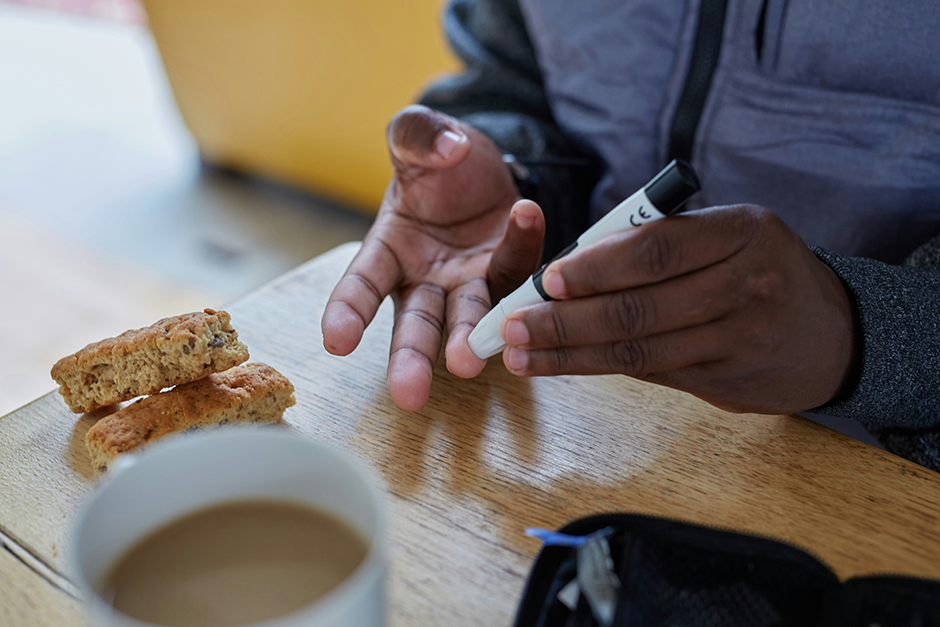On this Diabetes Alert Day – March 26 – the Minnesota Department of Health urges people to investigate whether or not they may be at risk of developing prediabetes by taking a seven-question quiz at DoIHavePrediabetes.org.
This screening is part of the Centers for Disease Control and Prevention and the Ad Council’s national campaign to raise awareness of prediabetes.
Prediabetes, according to the CDC, occurs when a person has high blood sugar levels, but not high enough to qualify for a diagnosis of type 2 diabetes. According to the Department of Health, three in four Minnesotans with prediabetes are unaware of their condition, and according to the CDC, 1 in 3 adults in the United States has prediabetes. While prediabetes is not diabetes yet, it serves as a warning sign that someone is at risk of developing type 2 diabetes unless they make some lifestyle changes around food and physical activity.
There are three forms of diabetes – type 1, type 2 and gestational. Those with type 1 diabetes are unable to produce a hormone called insulin, while the cells of people with type 2 diabetes, according to the Joslin Diabetes Center, don’t respond to insulin correctly. Gestational diabetes occurs during pregnancy, but having had gestational diabetes while pregnant increases a person’s risk of developing type 2 diabetes later on. In all cases of diabetes, the body is unable to use insulin to properly regulate blood sugar.
“Insulin operates as a key to let the energy from food, the carbohydrates and sugar … into your cells,” said Teresa Ambroz, manager of the Diabetes and Health Behavior Unit at the Minnesota Department of Health. “Three out of four people don’t know they have pre-diabetes that have it and one in 10 people with diabetes do not know they have it.”
According to the World Health Organization, having diabetes increases a person’s risk of “heart attack, stroke and kidney failure,” leading to poorer health outcomes over time.
People of color are at greater risk of diabetes nationwide, with non-Hispanic white people having a lower percentage of diagnosed diabetes than other racial and ethnic groups in the United States. In Minnesota, said Ambroz, Native Americans and African-Americans are at particularly high risk of developing diabetes.
Kim Matteen, a diabetes program planner at the Minnesota Department of Health, said people of Native American descent have shared with her that developing diabetes can feel inevitable.
“It’s not ‘Do you have diabetes?’” said Matteen,“It’s ‘Do you have diabetes yet?’ We really want to help them change that.”
“Just 20 years ago, our diabetes rates were half of what they are now. And if you go back even further; it’s been going up for the last few decades.” Ambroz added. “So it isn’t inevitable, but it’s feeling inevitable for some communities.”
The reasons for disparities in diabetes, Ambroz said, are likely linked to social determinants of health – details about our lifestyles that can make a great impact on our health, including “where we live, work, play, (and) pray.”
“People don’t have access to the same things. Some communities may have no access to healthy foods or very limited access to fresh fruits and vegetables, or affordable, safe, healthy foods, or even water that’s perceived as safe,” said Ambroz.
As a result of limited access, various communities “don’t have the same choices for making healthier purchases,” according to Ambroz, and may “lean towards drinking sugary drinks, or they might be exposed to more advertising for unhealthy foods in their communities.” If their surrounding neighborhoods are not safe, Ambroz said, “they might not want to go out and be physically active.”
The good news is prediabetes doesn’t have to become type 2 diabetes. According to the CDC, losing around 5% to 7% of one’s weight, if someone is overweight, along with regular physical activity can lower the risk of developing type 2 diabetes.
“If you’re a 200 pound person, we’re asking for (a loss of) 10 to 14 pounds,” said Matteen. “The science tells us if we can help you lose that and keep it off, we’re gonna help you reduce your risk of developing type two diabetes.”
“It’s as much parking your car further away, walking up the stairs,” said Ambroz. “All the little things that you do add up, with the aim of getting to at least 30 minutes of moderate activity most days of the week. So, 30 minutes, five times a week, 150 minutes a week, 10 minutes here, 10 minutes there – it all contributes to improving your health.”
The test at DoIHavePrediabetes.org, which is available in English and Spanish, is a first step towards determining someone’s risk of prediabetes, based on a variety of factors, including race, height and weight/body mass index (BMI), and family history. Afterwards, said Ambroz, people may ask their doctor to conduct a blood test to determine whether or not they are prediabetic.
Those who find out they have prediabetes, said Matteen, should consider it a “wake up call” to make lifestyle changes. She does recognize, however, that these changes can be difficult to make, and recommends outside support, such as through a CDC-recognized lifestyle change program where a person can meet with other people seeking to make the same changes.
“If you’re at risk for pre-diabetes, join a class, do some things, get some support, and get the help you need to prevent type two diabetes,”said Matteen, “because type two diabetes is preventable.”

Deanna Pistono
Deanna Pistono is MinnPost’s Race & Health Equity fellow. Follow her on Twitter @deannapistono or email her at dpistono@minnpost.com.





